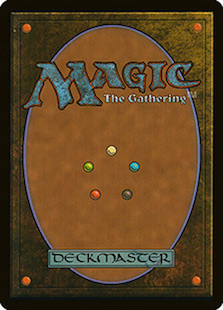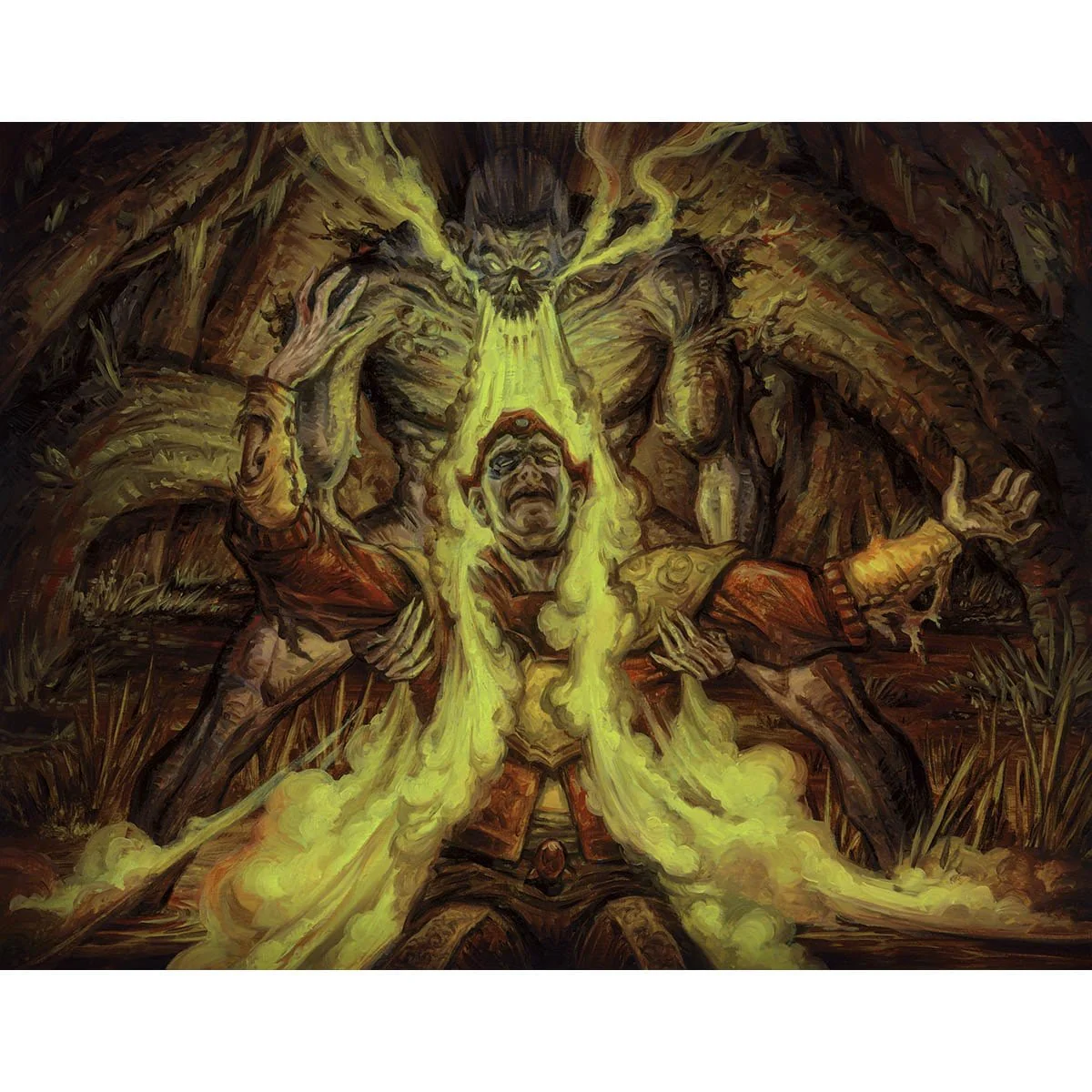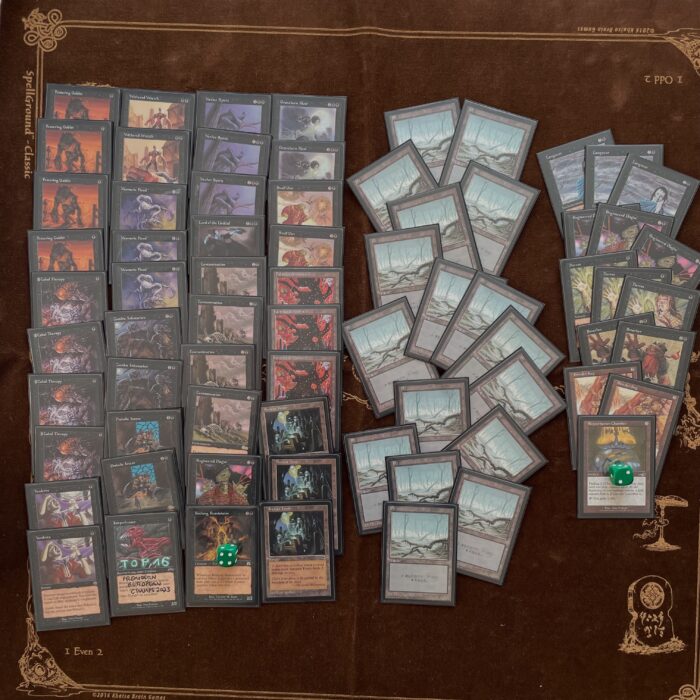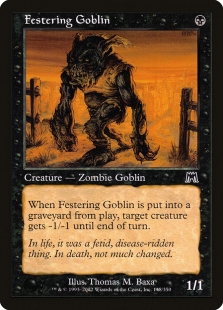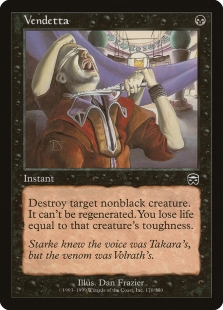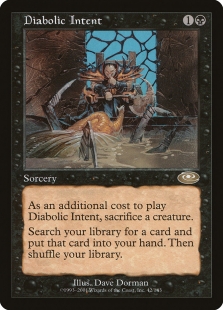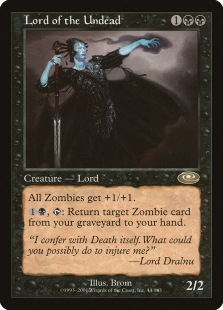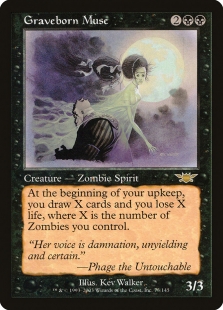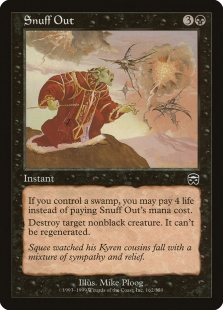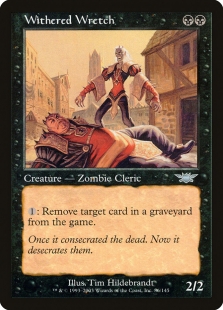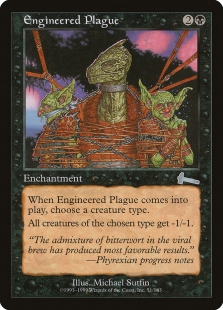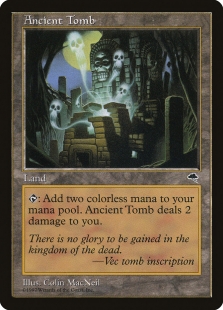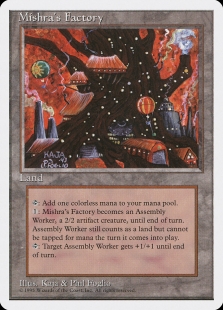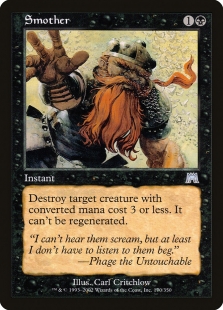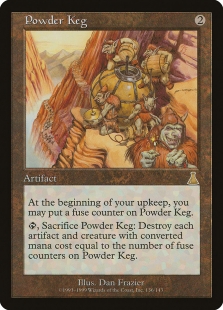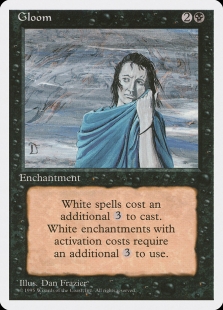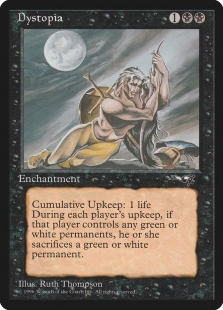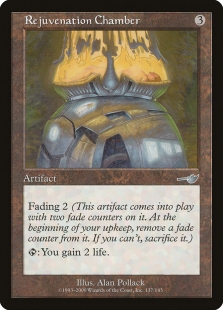Hey. It’s been a while since I wrote on here. All work and no play makes a dull blog I guess, but now it’s vacation times and I thought I’d share a fun deck I’ve been trying lately—Zombie Contamination. Featured artwork: Rotlung Reanimator by Thomas M. Baxa.
Let’s talk about black
It’s no secret that black struggles in Premodern. While it has a lot of powerful tools, it’s hard to put them together into a deck that actually lines up well against the competition. Black’s fauna of aggressive creatures are soft versus red burn spells, and suicide style decks lack the reach of Sligh and the grinding power of Goblins.
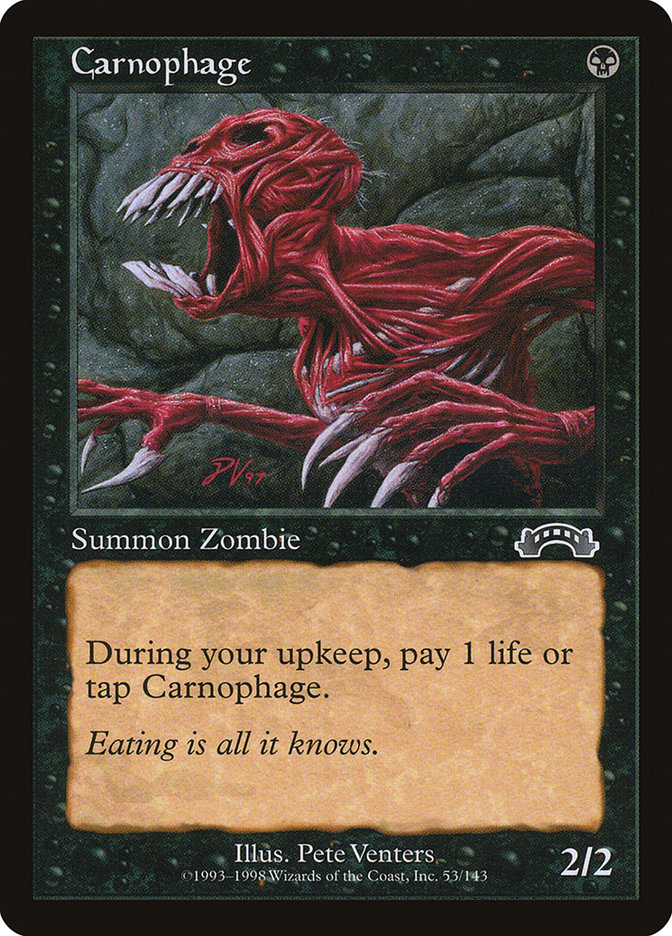

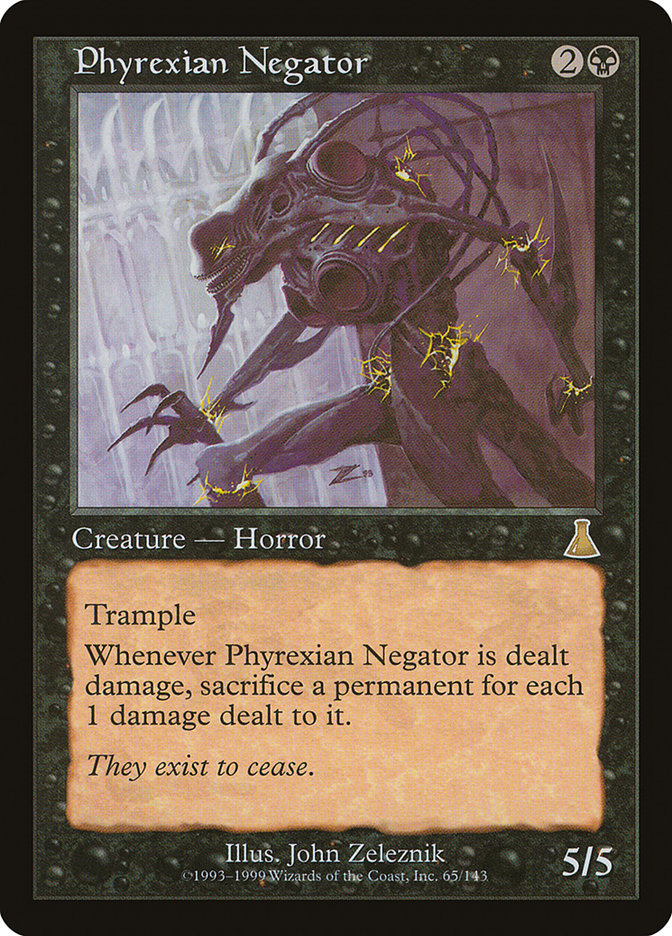
As for disruption, discard spells like Duress and Cabal Therapy are excellent, and if you want to go deeper, Stupor and Chain of Smog can also be good in the right deck. Options for removal are also great, whether you want to deal with a Phyrexian Dreadnought, a Terravore or a swarm of elves. As per its colour identity, black has a hard time dealing with resolved artifacts and enchantments, however. Considering the power of enchantments in particular in Premodern, e.g. Survival of the Fittest, Oath of Druids, Sulfuric Vortex, Stasis, Parallax Wave and Tide etc, it’s hard to build a black-based control deck. (Black has some powerful enchantments as well, as it turns out, which we’ll get to in a while.) Dipping into white or green for Disenchant or Naturalize is an option, but then we have to live with a wonky mana base instead. BW Control uses Eternal Dragon to improve the mana, but the deck is slow and has a hard time keeping up with blue magic when games go long.
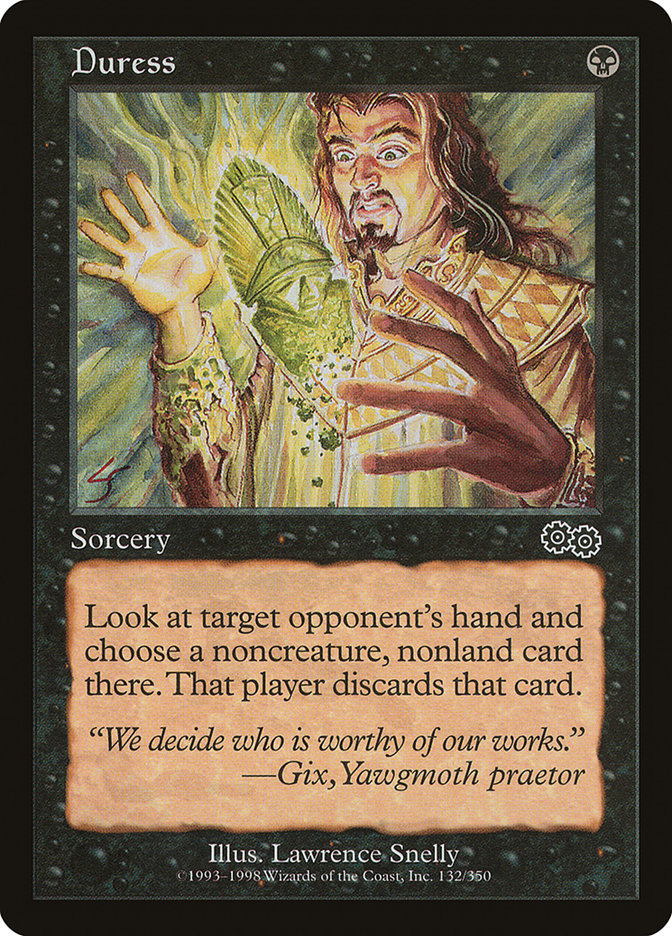
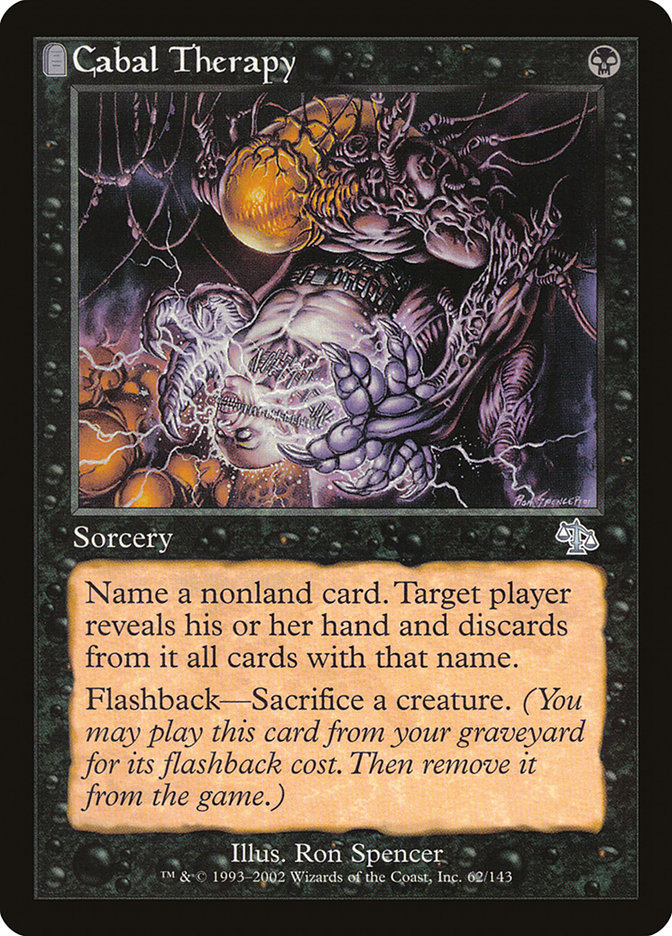
We could try adding more discard, hoping to strip the haymakers from the opponent’s hand before they hit the battlefield. But the problem is that the more discard (and reactive cards in general) you add, the less cards you have left for pressuring your opponent, giving them more time to come back, e.g. by topdecking a Goblin Ringleader or a Replenish, while the discard spells themselves are often bad topdecks. So striking a balance between pro-active and reactive cards is key. The Rock and Deadguy Ale are two popular archetypes (though less so recently) that try to walk this line. Another midrange approach, on the aggressive end, is the Clerics deck. This is a synergistic deck where the duo of Rotlung Reanimator and Cabal Archon provides both value and reach.
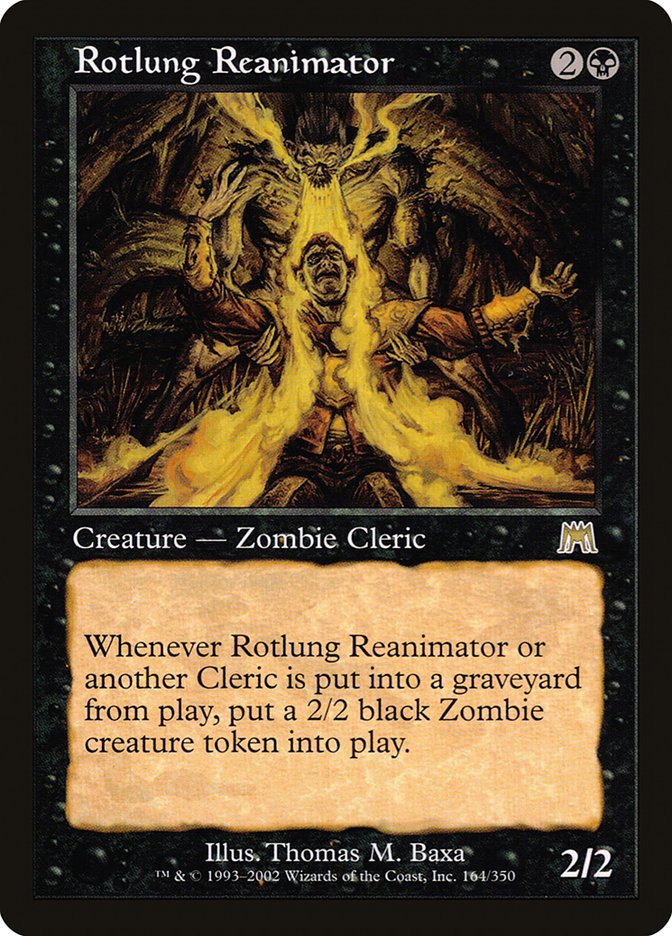
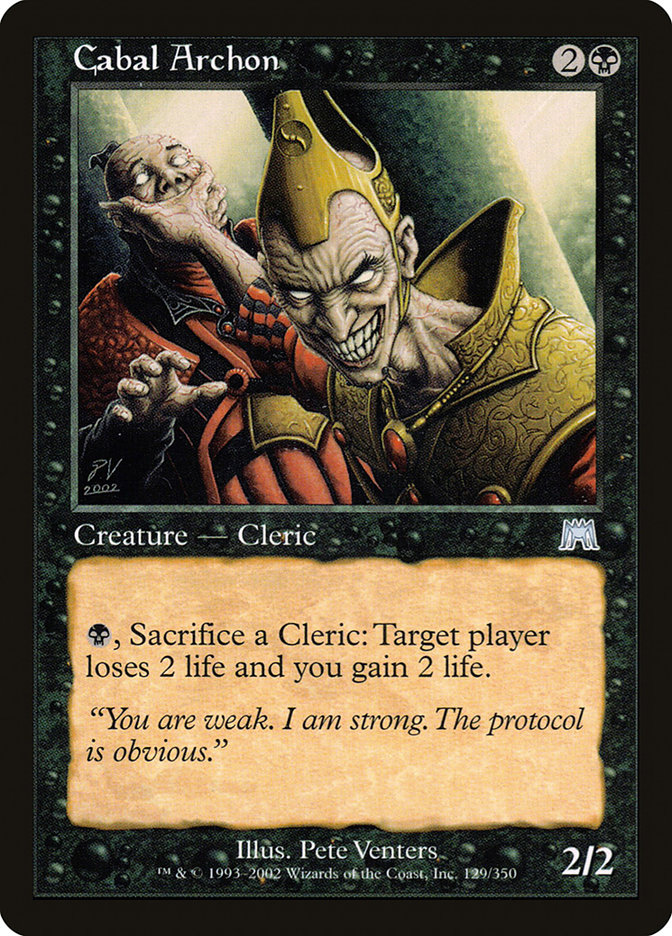
Finally, there’s a uniquely black approach to control—relying on discard and removal in the early and mid game, thereafter shutting the door close with Contamination. The proven shell for this card relies on Nether Spirit and Zombie Infestation to maintain the lock. Álvaro Galindo has worked a lot on this deck and also put up some impressive results, e.g. second place at the Chilean Nationals 2025. You can listen to Álvaro talk more about the deck in episode 87 of the Monster of the Week podcast.
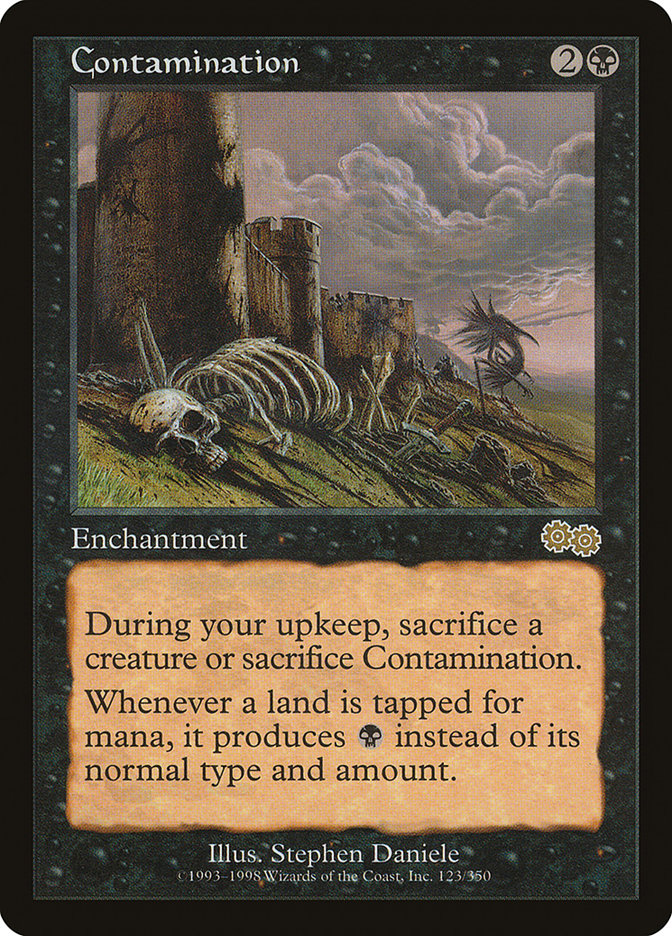
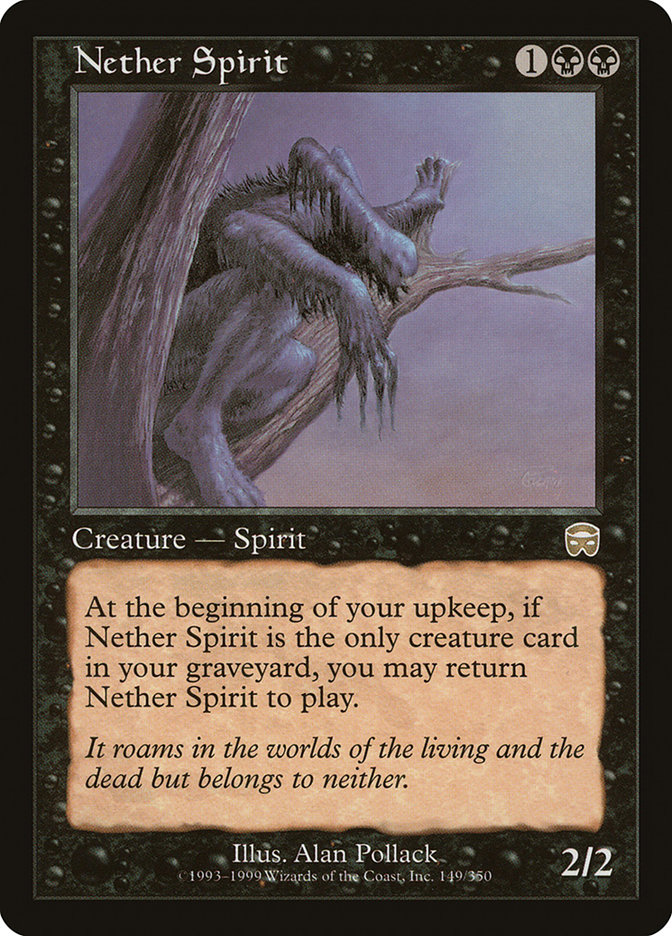
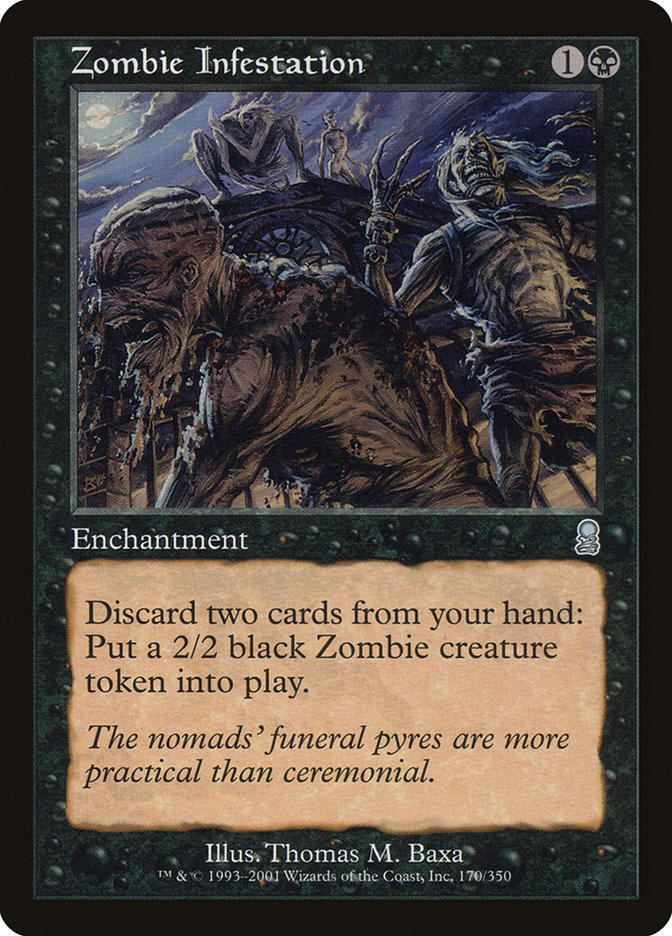
Contamination is a powerful card, and especially so when black is less represented than the other colours. If you can keep it on the board, it will shut down most decks completely (notable exceptions are Elves and Terravore decks with Mox Diamond). The above-mentioned control shell is restrictive though, as we need Nether Spirit to set up a proper lock, which in turn prohibits other creatures in the deck. I wanted to explore how Contamination could be used in a creature based deck, where it could be played a bit more opportunistically, possibly just buying a couple of turns until we can attack for lethal.
Brewing
My initial idea was to just jam Contamination in a black aggro deck, considering suicide creatures like Flesh Reaver, clerics, zombies and a mix of all these. The sacrifice clause on Contamination is real, though, especially when facing decks with removal, so the deck would easily run out of gas. My second idea was to run Contamination alongside Oath of Ghouls, along with value creatures like Rotlung Reanimator, Phyrexian Rager, Festering Goblin and Mesmeric Fiend. I used Carrion Feeder as a sac outlet, to re-use the utility creatures with Oath of Ghouls, and to exile cards permanently with Mesmeric Fiend (saccing it with the exile trigger on the stack). This deck had its moments, but getting value out of Oath of Ghouls was too much work. Especially so against the main aggro decks of the format—Goblins, Elves and Sligh—who would often have more creatures in the graveyard than yourself, in which case I also needed Withered Wretch to clean up my opponent’s yard.
Zombie Contamination
Eventually, I decided to cut Oath of Ghouls and ended up with the following deck, which I played at the Premodern Universal Championship in Darmstadt recently:
I beat Elves, Sligh and Frantic Storm, lost to Devourer Combo and a UG Survival Opposition / FEB hybrid, and drew (unintentionally) versus GW Terra-Geddon. I was happy with the deck overall, but I’ve since changed it a bit to the following version:
The deck plays 18 creatures in total, not counting Zombie Infestation and Mishra’s Factory. We can often play Contamination early, and then keep it on the board with some combination of Nether Spirit, Lord of the Undead, Graveborn Muse, Zombie Infestation, or just a couple of Rotlung Reanimator. Here are some notes about specific card choices:
- Festering Goblin: A pet card of mine since long ago. 🙂 It’s the perfect road block versus Goblin Lackey specifically, but very good versus both Goblins and Sligh generally as it profitably blocks every creature in those decks (besides Ball Lightning). Can turn into a real fest with Cabal Therapy or Diabolic Intent.
- Rotlung Reanimator: My new favourite card. It gets more fun in multiples.
- Cabal Therapy: An all-star in this deck, and often makes for interesting situations for both you and your opponent. It gets much better if we can first have a peek with Duress.
- Diabolic Intent: I’ve been happy with this a two-of so far. In this shell, it’s as close as it gets to Demonic Tutor. It can be Contamination 5–6 or get whatever you need for the situation, e.g. a removal. And gives some more leverage on your sideboard.
- Nether Spirit: running this along with other creatures is puzzling to some, but it’s perfectly fine if it’s not online all the time. Often we can get some value from it in the early game, e.g. with a Cabal Therapy. Later on, we can also get it online again with Withered Wretch or Lord of the Undead. In worst case it’s still a creature.
- Zombie Infestation: it’s not amazing in this shell, but it’s a way to do something with excess lands and discard spells in the late game. It also gives you an out if someone messes with your mana.
- Graveborn Muse: I’ve been impressed with this card so far. A Phyrexian Arena on legs is good in itself, and as soon as you have other zombies in play the value is crazy. It can often keep Contamination running by itself, and if you have Zombie Infestation, it’s a lock. The life loss is relevant, but we have a lot of sac outlets if we go too low.
- Lord of the Undead: one more zombie and it’s a lock with Contamination. The +1/+1 is handy when you need to switch gears and go on attack, but also let’s your Zombies brawl with elephant tokens and pumped up assembly workers.
- Vendetta/Snuff Out: I’ve prioritized speed over life loss here, as it’s important to develop the board as quickly as possible.
- Engineered Plague: Included as a one-of tutor target in the main deck, as it’s so crucial against the tribal decks. Name goblins and Festering Goblin turns into a sorcery-speed removal…
- Ancient Tomb: Allows you to jump the curve and play Rotlung Reanimator on turn 2 (and Muse on turn 3), or Engineered Plague and Gloom from the sideboard.
Wrap-up
Zombie Contamination is fun to play and has a lot of small tricks to it. It’s a true midrange deck, and you need to be flexible about your game plan. The deck can probably be improved with more testing, but so far I’ve found that it can put up a fight versus most decks. Give it a try and let me know how it goes!
– Martin
